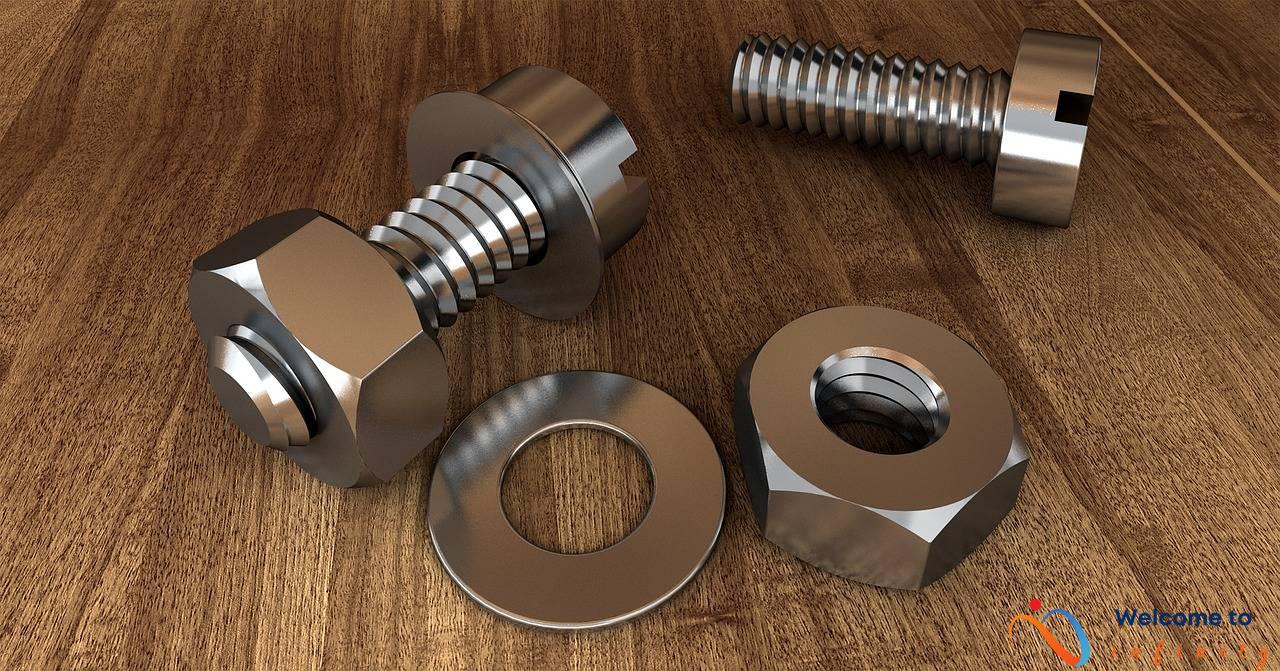Over the last few decades, robotic technology has been widely adopted in the automotive industry, revolutionizing the way cars are manufactured. Robotics has allowed manufacturers to streamline production and increase output, ultimately resulting in higher profitability. With robots taking on tasks that were once performed by human workers, automotive factories are now equipped with sophisticated systems that can perform complex operations with precision and accuracy, making the manufacturing process more efficient than ever before.
The history of robotics in the automotive industry dates back to the early 1960s, when the first experimental robots were developed to perform simple tasks such as welding, painting, and assembly. These early models were basic by today's standards and lacked the sophistication necessary for mass production. However, they paved the way for the development of more advanced robots, which could perform more complex operations with greater precision and speed. Today, robots are capable of performing tasks such as machining, stamping, painting, and even driving autonomous vehicles.
One of the key advantages of using robotics in the automotive industry is the improved production rates. The ability of robots to work around the clock, performing repetitive tasks with precision and accuracy, allows manufacturers to produce more cars at a faster rate than ever before. This reduced production time enables manufacturers to increase output, ultimately improving profitability. Additionally, robots have the ability to operate under extreme conditions and in hazardous environments where human workers cannot work, making them an ideal solution for manufacturing processes requiring strict precision and accuracy.
The Evolution of Robotics in the Automotive Industry
In the early 1960s, the first experiments with robots in the automotive industry began. The first industrial robot was installed by Unimation in a General Motors plant in New Jersey, USA, in 1961. The robot, called the Unimate, performed welding operations in the production of GM's Ternstedt plant in Trenton, New Jersey. The Unimate was a huge success, and in 1969 a total of 96 Unimates had been installed in various industries.
By the 1970s, robots had become an integral part of automotive manufacturing. They were widely used, especially for material handling, assembly, and paint application. Japan emerged as a leader in the robotics industry, with companies like Kawasaki and Fanuc producing industrial robots for various applications, including automotive manufacturing.
Over the years, robots have become more sophisticated and intelligent, with capabilities like vision and touch sensors, laser tracking, and adaptive control. They can perform complex tasks with greater speed, precision, and efficiency than human workers, leading to increased productivity and profitability for automotive manufacturers.
- In the 1980s, articulated robots became commonly used in automotive assembly lines for spot welding and other functions that require precise movements and alignment.
- By the 1990s, robots were being used for painting, aided by advancements in control software and computer vision systems that enabled the robots to accurately apply paint in complex patterns and shapes.
- In recent years, collaborative robots or cobots, have also emerged, designed to work alongside human workers in automotive manufacturing plants. These cobots have safety features that allow them to operate safely alongside human workers, opening up new possibilities for enhanced efficiency and productivity.
With the increasing demand for electric and autonomous vehicles, the use of robots in automotive manufacturing is only expected to grow further. As robots become more intelligent and versatile, they will be able to perform an even wider range of tasks with greater accuracy and efficiency, revolutionizing the automotive industry in the decades to come.
The Advantages of Robotic Technology in the Automotive Industry
The use of robots in the automotive industry has revolutionized the production process and brought about numerous advantages. One of the most significant advantages of robotic technology is the boost in production efficiency. With robots, manufacturers can increase their output and meet the market demand for more vehicles. The precision, speed and repeatability of robotic systems make them ideal for automotive manufacturing, and as a result, they have been adopted by leading manufacturers globally.
Robots also improve the precision and quality of automotive production processes. They are capable of highly-accurate and consistent cuts and welds that are difficult to achieve with human labor. The accuracy of robots ensures that each car part is consistent, and this consistency improves the quality of the final product. This precision also translates to cost savings since fewer mistakes are made, and there is less waste. This increased precision and quality have also had a positive effect on customer satisfaction since reliable and high-quality products are the best marketing tools in the automotive industry.
The use of robotic technology has also significantly improved workplace safety in the automotive industry. Dangerous tasks such as welding, painting, and heavy lifting have been shifted from humans to robots, reducing the risks of accidents and injuries. In addition, robots can access tight spaces that can be hazardous to humans, reducing the risks associated with manually operating machines. This has had a positive impact on employee morale and productivity since workers feel more secure and valued when their employers prioritize their safety.
An excellent example of the advantages of robots in the automotive industry is the case of General Motors (GM). GM has implemented robots in their production lines, which has resulted in a 20% cost savings and reduction of waste by 50%. The use of robots by Audi has also enabled them to produce more than 400,000 cars annually. These are some of the most significant benefits of using robots in the automotive industry.
Improved Production Rates
With the use of robots in the automotive industry, production rates have increased dramatically in recent years. Robots are able to work around the clock without needing breaks, meaning that production can continue 24/7. This has led to a significant increase in the number of cars that can be produced in a given period of time.
Besides, robots can perform tasks much faster and more accurately than their human counterparts. For example, robots can paint cars with greater precision and speed than human workers, resulting in a better-quality finish and faster production times. Also, robots can perform repetitive tasks perfectly and consistently without any deviation in quality, unlike human workers who are prone to make errors and tire over time.
Moreover, robots can be programmed to optimize production processes and adjust to changing demands, resulting in more streamlined and efficient manufacturing operations. This leads to an increase in productivity and an improvement in overall profitability, as the more cars a manufacturer can produce in a given period, the greater their potential earnings will be.
As a result of robots' ability to improve production rates, automotive manufacturers are investing heavily in robotic technology to increase their output and gain a competitive advantage in the market.
Increased Precision and Quality
The use of robots in the automotive industry has revolutionized the production process by improving the precision and quality of manufacturing. Robots have the ability to perform highly-accurate and consistent operations such as cuts, welds, and other tasks that are difficult and sometimes impossible for human workers to match. This increased precision ensures that each product is made perfectly, meeting all the required specifications and tolerances.
Robots also provide an extremely high level of consistency in each task they perform. This eliminates the risk of human errors and improves the uniformity of the products. As a result, the final output is of higher quality and is consistent for each unit produced. This consistency and precision of robots translate into a higher standard of quality and a reduction in product defects, which ultimately improves customer satisfaction.
Moreover, the use of robots enables the manufacturing process to operate 24/7, ensuring a constant flow of products while maintaining the same level of precision and quality throughout the production process. This significantly reduces the lead time for the production of each unit, and the high quality of the product is maintained throughout, leading to a more efficient production process.
As a result, automotive manufacturers can produce high-quality products in large quantities with the help of robots, and the consistency of each produced unit is guaranteed. The use of robots in the automotive industry is a game changer and has cemented the automotive industry's position in the manufacturing market, ensuring that the production process is streamlined, efficient, and of the highest quality.
Improved Workplace Safety
Robotic technology has significantly improved workplace safety in the automotive industry. The use of robots in hazardous and physically demanding tasks has reduced the risk of accidents and injuries, providing a safer working environment for employees.
For example, robots can perform heavy lifting, repetitive motions, and work in confined spaces without putting human workers at risk. This not only minimizes the risk of physical injuries but also reduces the long-term impact on worker health caused by these types of tasks.
Moreover, robots are equipped with sensors that can detect potential safety hazards and prevent accidents before they occur. For instance, robots can identify and avoid collision incidents with humans or other robots in the workspace, alerting workers about potential safety risks in real-time.
In addition, automation improves overall working conditions for employees by minimizing the exposure to hazardous materials and negative environmental factors, such as high temperatures, noise, and dust. This helps prevent occupational hazards and reduces worker fatigue, which is essential to maintain a healthy and productive workforce.
In summary, the use of robotics in the automotive industry has significantly improved workplace safety by reducing risks, preventing accidents, and improving working conditions. As manufacturers continue to adopt more advanced robotic technologies, we can expect further improvements in safety and greater protection for employees.
Future Applications of Robotics in the Automotive Industry
The use of robots in the automotive industry is gaining momentum with the increasing advancements in technology. The future of robotics in the automotive industry is predicted to be more sophisticated and integrated with cutting-edge technologies. Some of the future applications of robotics in the automotive industry are:
Car manufacturers are already employing autonomous systems to produce certain automotive parts. However, in the future, autonomous assembly and manufacturing systems may become more prevalent. Such systems would rely on robots and complete the entire production process with minimal human intervention. This autonomous assembly system can also conduct quality inspections and make adjustments to tools by itself to fix quality issues.
The integration of machine learning and AI will be a significant change that may impact the automotive industry in the future. These technologies will enable manufacturers to analyze data and production processes to identify inefficiencies, reduce waste, and achieve optimal productivity. With machine learning, robots can learn from experience and make decisions accordingly. For instance, robots may learn to differentiate between defective parts and good ones, and this can help minimize wastage in automotive manufacturing.
The integration of robots in the automotive industry is a significant development. The use of robotics technology ensures improved efficiency, precision, and safety of automotive manufacturing. With the future integration of autonomous systems and machine learning techniques, the industry is marching towards a future of optimized productivity and profitability.
Autonomous Manufacturing and Assembly Systems
Autonomous manufacturing and assembly systems are the future of the automotive industry. By eliminating the need for human workers, these systems can operate around the clock, increasing production efficiency and output while reducing operating costs. There are several potential benefits of fully-automated systems, such as reduced labor costs, increased precision, and faster production rates.
One of the main challenges of implementing fully-automated systems is the high initial cost. The installation of machinery and equipment required for automation can be expensive. Also, considerable investments are needed to maintain and update the system regularly. Additionally, the development of software and hardware that supports this technology may require long development cycles.
Another challenge is the reduction of employment opportunities. While automation could lead to a large number of new jobs in research and development as well as in maintenance and servicing, it could also lead to a significant decline in manual labor jobs. The auto industry needs to be more creative in creating new employment areas for unskilled labor to prevent this.
To fully embrace autonomous manufacturing and assembly systems, automotive manufacturers should invest in employee training to ensure that they are skilled in the operation and maintenance of the equipment.
While autonomous manufacturing and assembly systems may seem like a daunting proposition, the benefits are clear. Reduced labor costs, increased production efficiency, and improved worker safety are just a few of the potential advantages. Therefore, those in the automotive industry should take advantage of these technologies by embracing and investing in them to meet the production demands of tomorrow.
The Role of Machine Learning and Artificial Intelligence
As technology continues to evolve in the automotive industry, machine learning and artificial intelligence are becoming increasingly important for optimizing manufacturing processes. These algorithms can analyze vast amounts of data and identify patterns and trends that human workers may not be able to detect, allowing for greater efficiency and productivity.
One potential application of machine learning in automotive manufacturing is predictive maintenance. By analyzing data on machine performance, these algorithms can identify potential issues before they occur and schedule preventative maintenance to minimize downtime. This can lead to significant cost savings and improve overall productivity.
Another potential application of machine learning is in quality control. These algorithms can analyze images of automotive parts and identify defects with greater accuracy and consistency than human workers. This can help reduce waste and ensure that only high-quality products make it to market.
A more advanced application of artificial intelligence in the automotive industry is the development of autonomous manufacturing systems. These systems could be programmed to adjust production levels in response to demand, making the manufacturing process smoother and more efficient. They could also be equipped with sensors and cameras to monitor the manufacturing process and make adjustments in real-time to minimize errors and improve quality.
While there are still challenges to overcome with the implementation of these technologies, the potential benefits are enormous. As more manufacturers invest in machine learning and artificial intelligence, we can expect to see significant improvements in efficiency, productivity, and quality control in the automotive industry.












